The 2021 NHL Expansion Draft, set to take place next June as the league populates the roster of the Seattle franchise that will bring it to 32 teams, probably was only on the periphery of fans’ minds even before the COVID-19 pandemic forced a shutdown in play – perhaps for the rest of the 2019-20 season.
Yet that draft is hardly ever far from the minds of every front office personnel member in the league, with executives forced for the second time in four years to think ahead to and prepare for the loss of one player – in some cases, a pretty good one.
The Vegas Golden Knights took advantage of teams’ desperation in the last such go-around in 2017. The NHL’s limited player protection rules for that draft resulted in the Knights building a strong roster from the get-go by plundering other teams’ rosters and benefiting from numerous pre-draft trades in which they would agree not to select certain players – for a price, of course. That set Vegas up to make a stunning run to the Stanley Cup Final in its first season – the third NHL team to do so – and remain competitive since.
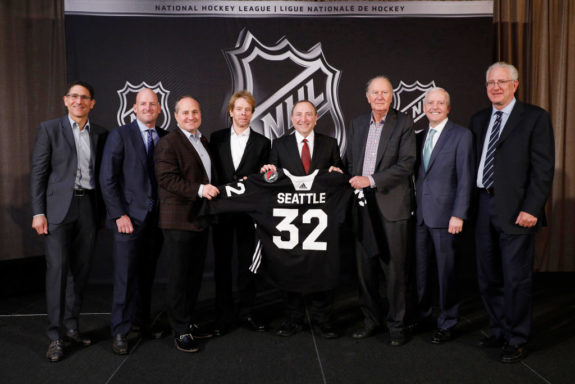
Those player protection parameters remain the same for Seattle’s draft, so like all teams (other than Vegas, which is exempt), the New York Rangers will need to make tough decisions on who to protect, thereby exposing certain players they don’t want to lose – and ultimately, crossing their fingers and hoping. Seattle must select one player from every team in the draft.
Related: Rangers’ Family – 4 Sets of Brothers in Blueshirts
With 14 months before the draft, the Blueshirts’ roster won’t be the same at that time. Yet it’s already clear that difficult choices will abound when it comes time to submit their list of protected players to the league.
So here’s an early look at how the front office might go about composing that list. The assumption is that the Rangers will choose the 7-3-1 configuration of protection, which allows for seven forwards, three defensemen and one goaltender to be blocked from being selected. Teams can also choose to protect any combination of eight skaters and one goalie.
Forwards
This group is probably in greater flux than the defense, yet it’s not difficult to see that the precious seven slots will fill up quickly. The obvious ones: Artemi Panarin, Chris Kreider and Mika Zibanejad (all of them will have no-movement clauses and thus would need to be protected anyway). Filip Chytil, Pavel Buchnevich and Brendan Lemieux, should each remain in the team’s long-term plans through next season, are likely to be protected. That leaves one slot.
Will it be Ryan Strome, should he be re-signed after the season? Jesper Fast might also re-up with the team. Youngsters Brett Howden and Julien Gauthier will also be eligible to be picked. Again, some of these players might be gone by then, but it’s clear that the Rangers will be forced to expose at least a few players who they won’t be thrilled to lose.
Related: One for the Ages – Sergei Zubov’s 1993-94 Season
Adding to the intrigue, the 30 clubs in the draft must expose two forwards who are under contract in 2021-22 and have played in at least 40 NHL games the prior season, or at least 70 in the previous two seasons. At this point, the Rangers don’t have any forwards besides Panarin, Kreider and Zibanejad who are signed beyond next season, other than Kaapo Kakko, who is exempt as he will have played only two NHL seasons.
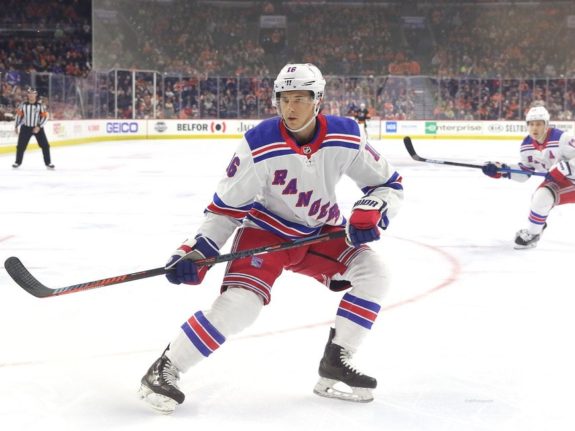
It’s worth pointing out that Seattle can select players who are set to become free agents, but it can only pick 10 total, so it’s more likely that the Ranger the club chooses will be under contract.
So that seventh and final slot – again, assuming Chytil, Buchnevich and Lemieux remain in the team’s plans past next season – may come down to performance in 2020-21. If Howden or Gauthier make a quantum leap – particularly Gauthier, who may have a higher ceiling than Howden – the Rangers might prioritize one of the young forwards over a re-signed Fast or even Strome. The other option is that Howden or Gauthier could serve as fodder for the draft. This decision could prove to be a crucial one as the Rangers look to build and maintain their talent base as they try to keep moving toward a return to playoff contention.
Defense
The required: Jacob Trouba, who will have gained no-movement protection for his seven-year, $56 million contract through the 2023-24 season and thus can’t be exposed. The likely: Ryan Lindgren, who would probably have to take a major step backward next season for the Rangers to expose him. The third slot? That’s currently unclear.
The decision will hinge on whether the Rangers decide to commit to Tony DeAngelo this offseason, with the talented offensive D-man set to become a restricted free agent whenever 2019-20 concludes. If they do, it’s probable that he would be the third defender protected.
Related: NHL Expansion Draft Rules and Regulations
Where it gets tricky: Each team must expose at least one defenseman who played in at least 40 NHL games the prior season, or at least 70 in the previous two. Brady Skjei, who largely disappointed after signing a six-year extension with the Rangers in July 2018, might have been a candidate to be left unprotected, but was dealt to the Carolina Hurricanes at the trade deadline in February.
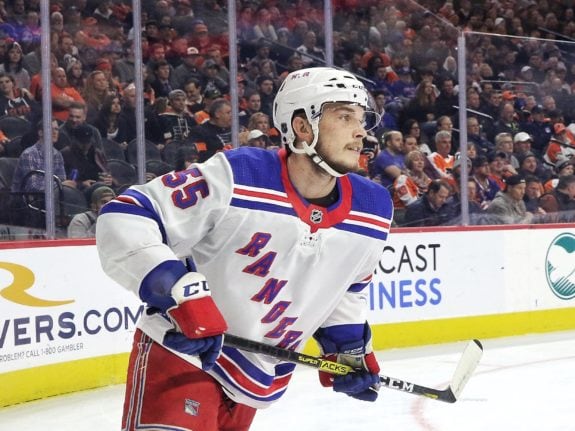
Unless the Rangers are planning on adding someone from outside the organization to fill this role, they’ll be faced with a need to find 40 games for a young defenseman – perhaps Libor Hajek, who was toiling in AHL Hartford after an uneven season. Hajek, though, will be a restricted free agent after next season and is no lock to make the team in 2020-21.
Plus, the 22-year-old was the centerpiece of the Ryan McDonagh-J.T. Miller trade with the Tampa Bay Lightning in February 2018 that has largely been a disappointment for the Blueshirts so far. Will the front office be keen on sacrificing a still-promising player that they coveted as part of that deal? It may have no choice but to do so and hope Hajek isn’t taken (back to that finger-crossing strategy).
Related: Worst Free Agent Signings in NHL History
The contracts of veterans Marc Staal and Brendan Smith expire at the end of next season. Perhaps the Rangers re-sign one of them for one or two years to serve as expansion draft fodder/veteran insurance, assuming they’ve reached the required number of games to qualify as the club’s exposed defenseman.
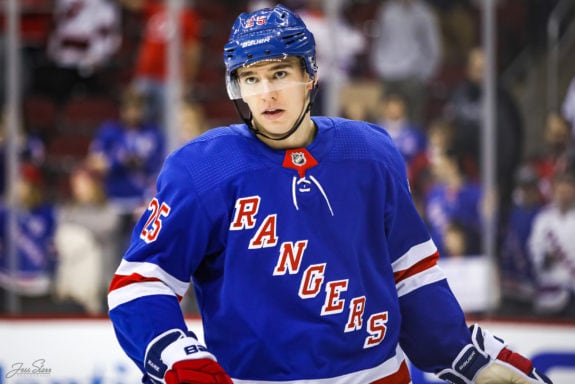
That’s hardly a guarantee with Hajek and newly-signed prospect K’Andre Miller expected to at least have the chance to make the team on the left side of the defense, where Staal and Smith play. The Rangers would, of course, welcome one or both kids earning regular spots as they rebuild with youthful assets acquired in trades and the entry draft, but it would remove a pair of expansion draft options if Staal and Smith barely play in 2020-21.
This situation is considerably dicier than that of the forwards. There aren’t any perfect options, and that should play a role in the Rangers’ decision on whether to re-sign DeAngelo. The promising Nils Lundkvist, like DeAngelo a right-handed defender who drives offense, is a strong possibility to be signed and in training camp next season. That could lead to the Rangers choosing to trade DeAngelo (who’s looking at a big raise that could strain the team’s salary cap situation in future seasons as well) and giving themselves the chance to protect Hajek.
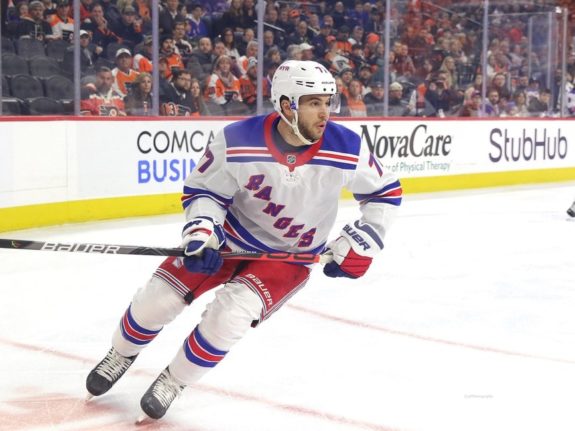
That choice will have to be made this offseason, not next. It’s the kind of difficult course of action the expansion draft forces most teams into, even with it still a year away.
Dealing the rising DeAngelo would be a tough pill for the Rangers to swallow, but it could prove to be a necessary option to avoid losing one of the NHL’s biggest commodities – a promising defense prospect – for nothing to Seattle.
Emerging star Adam Fox is exempt from the draft as he’ll have only played two seasons, as would be Miller, even if he were to make the roster next season.
Goaltender
This will probably be the easiest choice for general manager Jeff Gorton and Co. With newly minted No. 1 goalie Igor Shesterkin exempt, the slot will likely go to Alexandar Georgiev, provided he isn’t dealt this offseason. The Rangers have shown no inclination to trade Georgiev despite speculation, and Henrik Lundqvist’s contract will be off the books by the expansion draft, either through it expiring after next season or more realistically, a buyout of some kind following this one.
Related: Rangers’ 5 Best Defensemen All-Time
Of course, nothing is easy with this expansion draft – the Rangers will need to expose one goaltender under contract in 2021-22, or one who will be a restricted free agent at the end of his current contract immediately prior to 2021-22. If the goaltender exposed is a restricted free agent, he must have already received his qualifying offer.

The Blueshirts may have made a preparatory move with their acquisition of J.F. Berube from the Philadelphia Flyers in February for future considerations, yet Berube is set to become an unrestricted free agent at season’s end and would need to be signed for two years to qualify him as the Rangers’ exposed netminder.
Endgame
Whatever course the Rangers chart in preparing for next June, there is bound to be pain. Like 30 other teams, they will lose someone they wanted to keep, no matter what path they choose. Well-prepared in 2017, Gorton got off easy when the Blueshirts lost center Oscar Lindberg, who played a season-plus for the Golden Knights before being dealt to the Ottawa Senators and returning to Europe after last season to play in Switzerland.
Failure to fully mitigate the unpleasant expansion draft experience this time could set back the Rangers’ impressive building process – and serve as a source of regret for years to come.